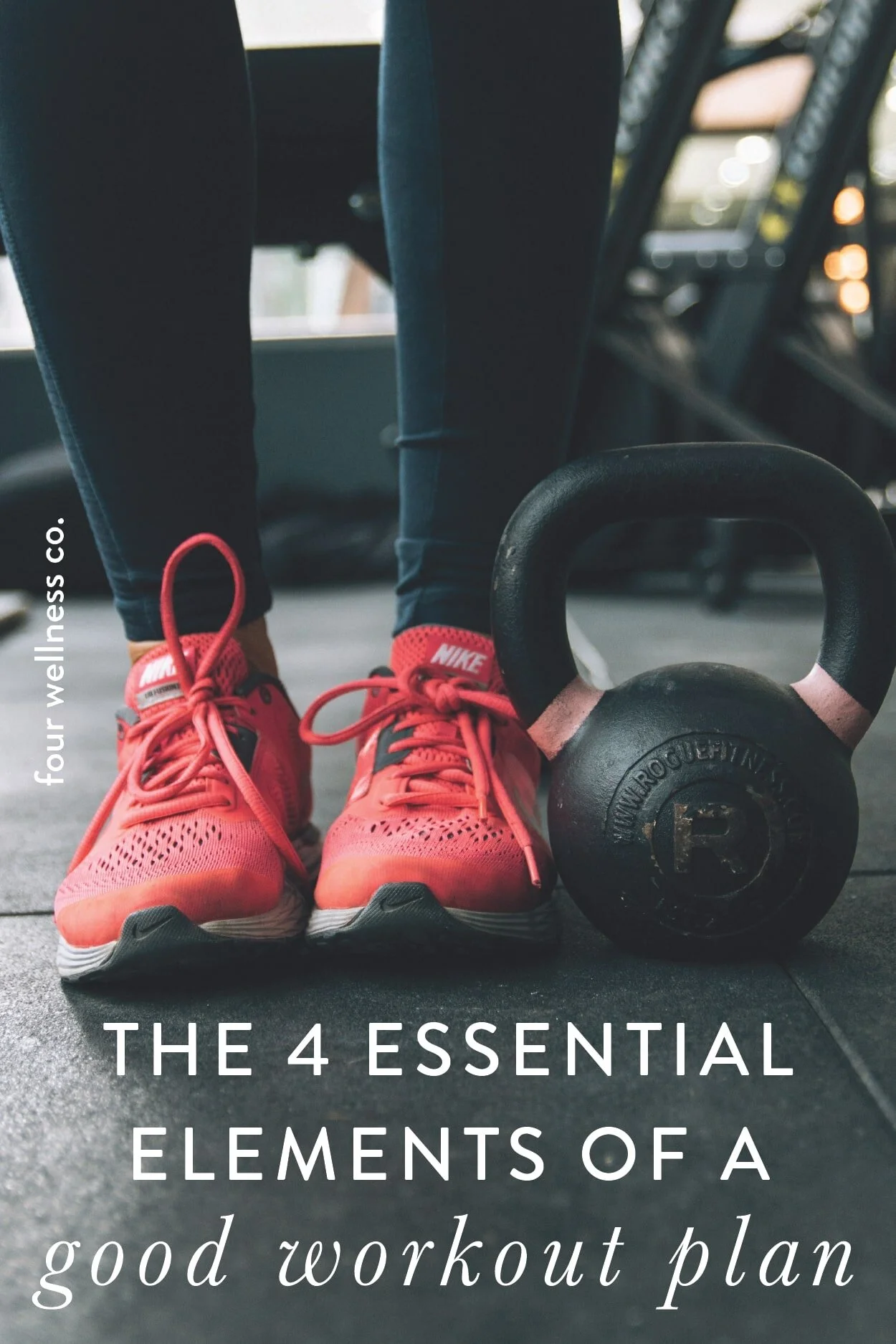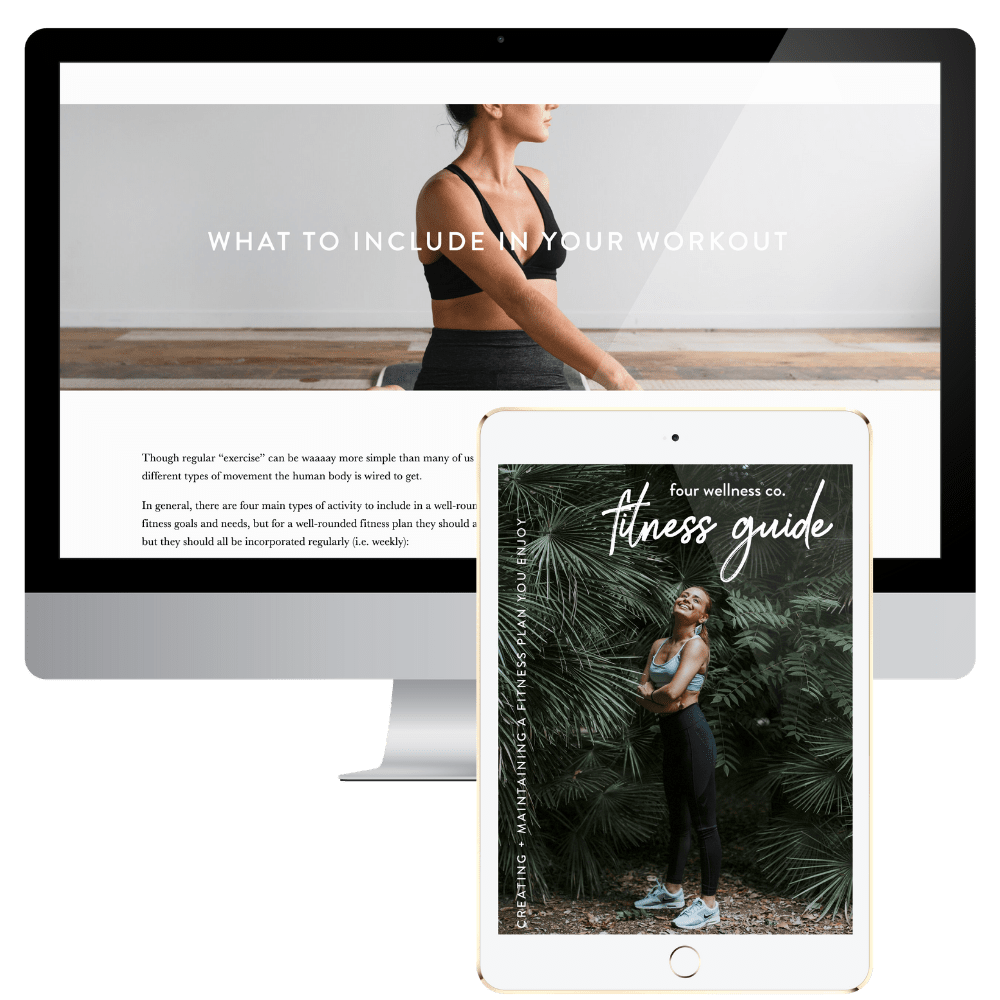Elements of a Good Workout Plan
For many people, “working out” means going to the gym, lifting weights and maybe running. But staying active and fit is actually much broader than that!
There are a vast variety of fitness activities that can achieve an effective workout. But regardless of the specific activities you enjoy most, there a few key elements to aim for in a physically active lifestyle. There are four essential things to include in your well-rounded fitness plan—and they’re much easier to incorporate than you may think.
What to include in your workout plan
First and foremost, exercise should be rewarding. That means: activities you enjoy, that challenge you, that relax you, that make your body and mind feel good.
And second, though the elements of your workout plan will vary a bit depending on your particular fitness goals and needs, in general, there are four main things to include in a well-rounded workout plan (which we’ll chat through below!). You don’t have to do each of these each day, but they should all be incorporated regularly (i.e. weekly).
The four essential elements of a good workout plan
Cardio
“Cardio” exercise raises your heart rate and breathing to improve the function of your heart, lungs and circulatory system. This is important for overall health because cardiovascular fitness slows your resting heart rate (putting less stress on this oh-so-important muscle), improves circulation and removes waste products from your system.
Though it’s often assumed to be synonymous with aerobic exercise (longer, lower-intensity activities like jogging), that’s not exactly true—both aerobic and anaerobic exercise (fast and intense activities like sprinting or squatting a barbell) can improve cardiovascular functioning.
Cardio can be a steady-state, low- to moderate-intensity exercise (like jogging or cycling), or intervals of high intensity (like tabata or high-intensity interval training—“HIIT”). It just needs to tax the large muscle groups (legs and trunk) strenuously enough and long enough to get you breathing heavily—which means you’re challenging your heart and lungs.
Cardio exercise doesn’t have to take place in a gym. Many activities in our daily lives can provide meaningful cardio exercise, like taking the stairs, raking leaves or shoveling snow. Aim for at least 4-5 cardio workouts per week—a 20-minute high-intensity workout or an hourlong low-intensity activity.
Example cardio activities: running, jogging, hiking, cycling, swimming, circuit training, HIIT (high-intensity interval training), dancing, stair climbing, shoveling snow, raking leaves, or playing sports like soccer, basketball, hockey
Strengthening
Another essential element to include in your fitness routine is activities that improve strength. Strength training helps build muscle, improve muscular strength and endurance, and is important in metabolism. It also helps to reduce injury from other activities and keep your skeletal system healthy as you age.
Just like cardio, strength training exercises vary widely. They can be accomplished with simply your bodyweight, or can involve free weights, machines or resistance bands.
In real life, muscles don’t work in isolation, so it’s best to focus on compound exercises that that include multiple muscle groups (like squats and pull-ups) rather than isolation exercises that emphasize just one muscle (like a bicep curl). It’s super duper important to use proper form while lifting weight, so if you’re just starting out, be sure to work with someone who can help you with proper form to avoid injury.
Example strengthening activities: bodyweight exercises, lifting weights, CrossFit, pilates, yoga, resistance bands, weight machines
Flexibility & mobility
First, a couple definitions: flexibility is the ability of a muscle to stretch and mobility is the ability of a joint to move freely through its range of motion. Both are important parts of overall fitness, and both should be incorporated into your fitness routine.
Example flexibility & mobility activities: foam rolling, stretching, yoga, mobility exercises
Recovery
The final important element of your workout plan is rest. As muscles are broken down they need time to heal and repair—which is how they grow stronger. You can still be active while recovering, though. Just aim for low-intensity activities you could easily talk while doing, like walking, hiking, or yoga.
Plan it out! Grab our workout guide:
Looking for a simple and easy to map out your new workout plan? We’ve got you covered!
Grab our printable/fillable Fitness Guide—it’s part of our Wellness Library of healthy living guides + resources.
✔️ how to set specific + attainable fitness goals
✔️ tips for creating a workout plan you actually enjoy
✔️ how to schedule your workouts to set yourself up for success
✔️ a printable/fillable fitness plan + schedule
Workout FAQs
How often should i work out?
How often you should work out depends somewhat on your fitness goals and what you hope to accomplish. In general, we suggest that people aim to be physically active in some way every day. How you choose to factor this into your specific workout plan/schedule is up to you! (Just remember that important recovery component too!)
Help! I need workout ideas
We curate lots of workout ideas (everything from running plans to bodyweight exercises to HIIT workouts to yoga) over on Pinterest.
FOUR WELLNESS TIP
Develop your own workout plan including each of the four essential elements above.








